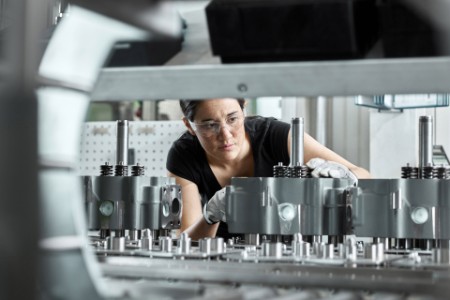A 2019 EY supply chain survey of 500 executives showed that end-to-end visibility was ranked as the top factor in creating a successful supply chain.
A digital twin is a virtual model of the physical supply chain. It helps supply chain leaders model what-if scenarios using numerous variables and presumed operating conditions. Digital twins enable smart real-time decisions to optimize the supply chain during regular operations — and can serve as a form of continuity planning in the event of a crisis.
Control tower functionality leverages AI and machine learning to anticipate supply chain interruptions and react to real-time disruptions in supply. Companies can then deploy resources as needed to encourage suppliers to shift production from one product to another, monitor supplier financial risk and update contingency planning and forecast on a per-minute basis.
The internet of things uses devices and sensors across the supply chain to monitor and track events. These sensors are found inside instrumentation on factory production lines, in wearable medical and location monitors and even through distribution/logistics systems to track goods, including perishable items. Event collection, data-integration technologies and analytics are crucial in making data arriving from hundreds of thousands of sensors throughout the supply chain actionable.
For manufacturing companies, the shop floor is the linchpin of the supply chain. When something goes wrong there, the disruption cascades far and wide. One of the immediate benefits of a digitally amplified supply chain is that leading practices and “in-the-trenches” wisdom from the shop floor can be effectively captured and utilized. This increases resiliency during a crisis such as COVID-19, when management staff might be absent. Operators on a digitally enabled shop floor also have more autonomy and can more easily physically distance from supervisors. Coaching can happen remotely as needed.
Beyond the shop floor, supply chain transformation helps break down organizational silos to reduce redundancies and other inefficiencies. A digital supply chain connects seamlessly to other parts of the business: finance, sales, real estate and so on. This helps companies manage costs and avoid unnecessary capital expenditures.
One of the immediate benefits of a digitally amplified supply chain is that leading practices and "in the trenches" wisdom from the shop floor can be effectively captured and utilized.
Ultimately, the most efficient and resilient supply chains are, in effect, networked ecosystems of suppliers, distributors, retailers and every other partner to the manufacturer. Digital enablement of the supply chain for the long term also pays dividends during a crisis.
Demonstrating resilience
Global consumer goods giant Procter & Gamble (P&G) has fine-tuned supply chain management so effectively over the last decade that they’ve been able to significantly reduce supply chain costs while improving results and supporting a growing business. And when the disruption of COVID-19 hit, they weren’t caught off balance. Not only did P&G persevere, the company’s supply chain model was agile enough to shift some manufacturing lines to the production of PPE, to be donated globally.
So, what are the elements of a solid supply chain foundation from which agility can emerge? Julio Nemeth, P&G Chief Product Supply Officer, says: "[First,] you have to start with the conviction that the supply chain is a driver of innovation. If the supply chain’s only job is making, packing and shipping, then its potential is limited. You must embark on a journey to make the supply chain an engine for total shareholder return."
If the supply chain’s only job is making, packing and shipping, then its potential is limited.
Across the entire supply chain, digital made a significant difference in P&G’s response to the COVID-19 crisis. The company’s supply chain model included self-sufficient supply chain teams that could operate without a manager on premises and could be physically fragmented as needed for social distancing.
Nemeth points out that supply chain resiliency does not require large stockpiles of inventory or safety stock. And adding additional production capacity “just to be more resilient” can have exactly the opposite effect. “Resiliency is not something you install,” he says. For P&G, supply chain resiliency is about minimizing the time needed to get back to normal performance (e.g., service levels, costs, cash generations and more) when disruption occurs.
When crisis hits an area of the global economy, it spreads and affects companies across the entire supplier ecosystem, from tier one and down, and often in unforeseen ways. Sophisticated systems for sensing demand, tracking and tracing are helpful for maneuvering, as are business continuity plans to keep things running during disruption. However, the real path to resilience resides in high-performing teams using collaborative processes and advanced technologies to counter the rising vulnerability of global supply chains.
The views of third parties set out in this publication are not necessarily the views of the global EY organization or its member firms. Moreover, they should be seen in the context of the time they were made.
Summary
Supply chain resilience is more than just adding capacity or arranging for alternate suppliers in times of crisis. Instead, resilience entails the hard work of business continuity and scenario planning, detecting signals for potential disruption, creating a high-performance culture, adopting digital technologies and moving in an agile manner to respond to market needs when crises occur.


